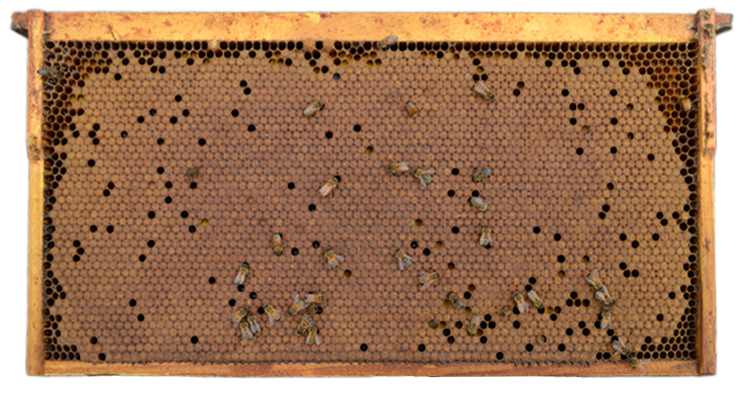
Brood Pattern
Reading the Brood Pattern
When inspecting a colony, examination of the brood nest should give satisfactory evidence of queen quality and overall health of the colony. The capped brood is the easiest to see, and its appearance can be used to evaluate the egg production (and therefore the overall quality) of a particular queen.

Solid brood pattern.
A solid brood pattern (above) indicates a competent, well fed queen has placed an egg in nearly every cell. A few empty cells are expected, as some may not have been empty or clean when the queen was laying eggs, or these could be due to hygienic bees removing pupae infested with varroa mites. As the brood matures and adult bees begin to emerge, they should do so in an obvious pattern, following the course where the queen deposited eggs.
Spotty brood pattern (below) has numerous random empty cells, lacking pupae, which are not the result of systematic adult emergence. A poor brood pattern may suggest a brood disease, a heavy mite infestation, or an inbred queen. The appearance of spotty brood should prompt the beekeeper to look closely into individual cells for more clues about the problem.

Spotty brood pattern.

Click the 'X' to exit fullscreen.